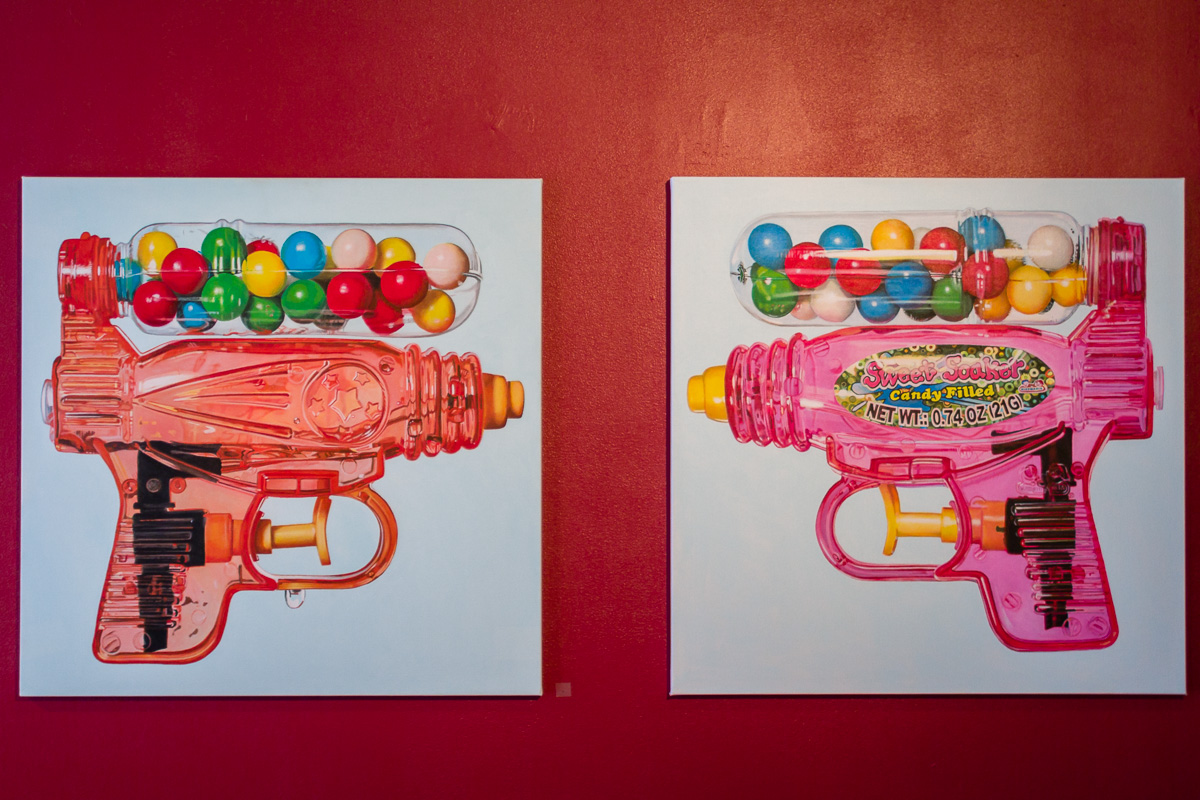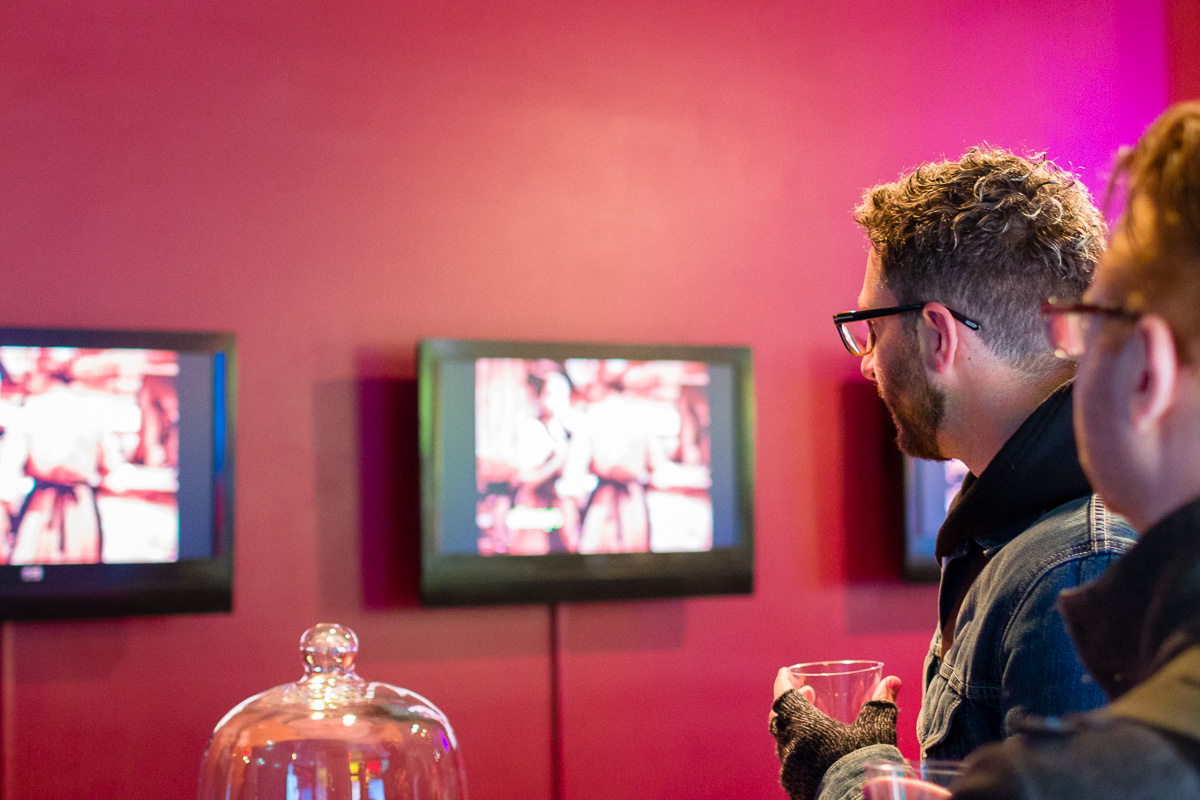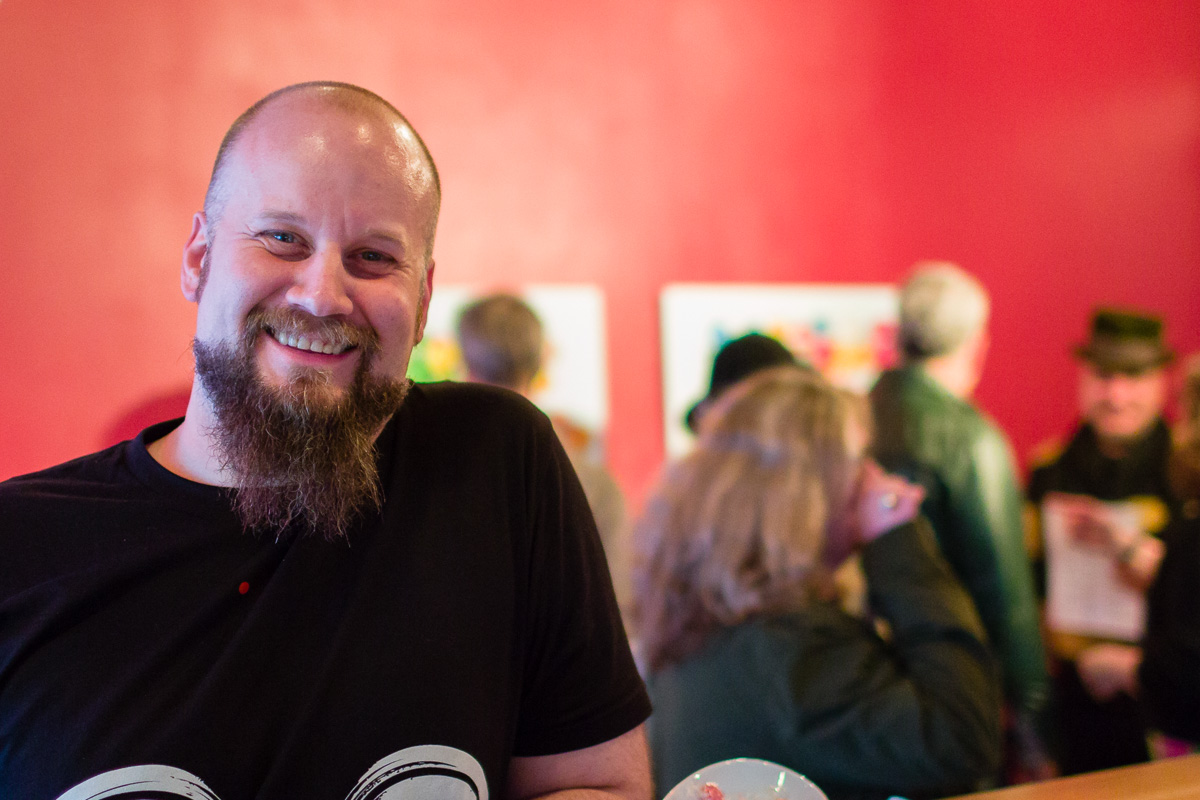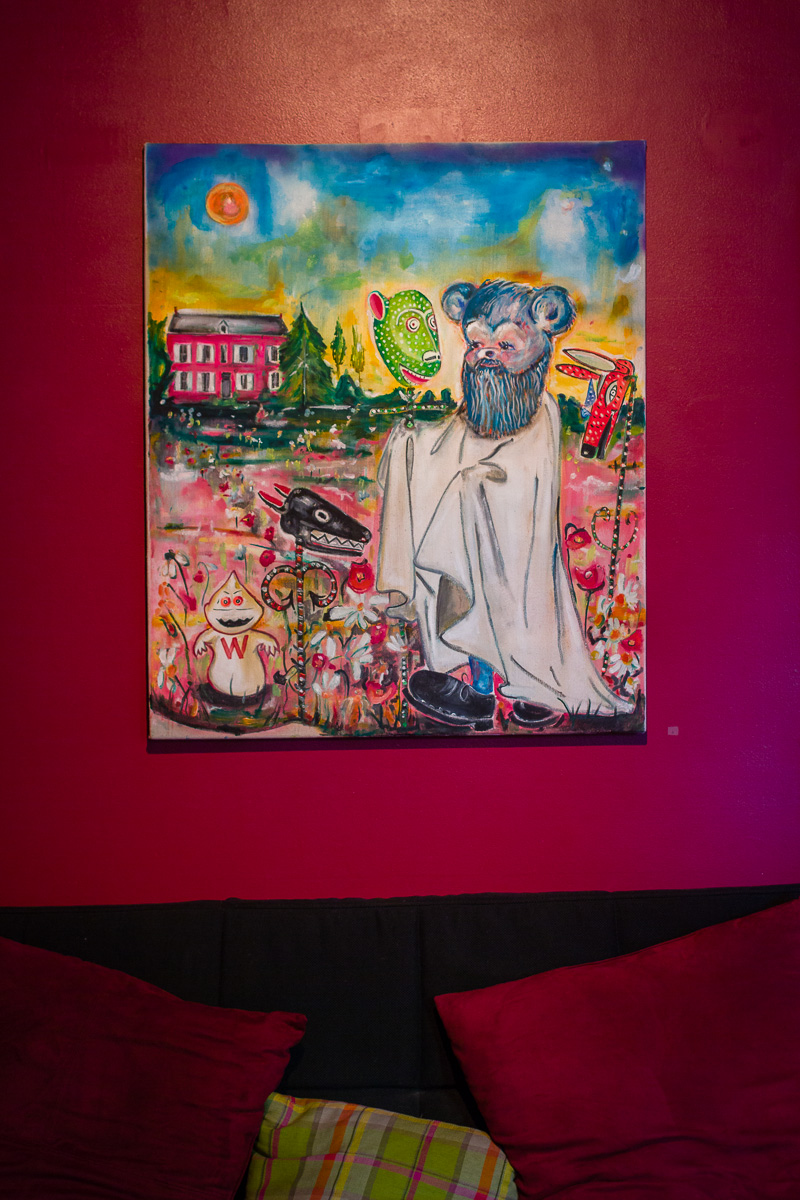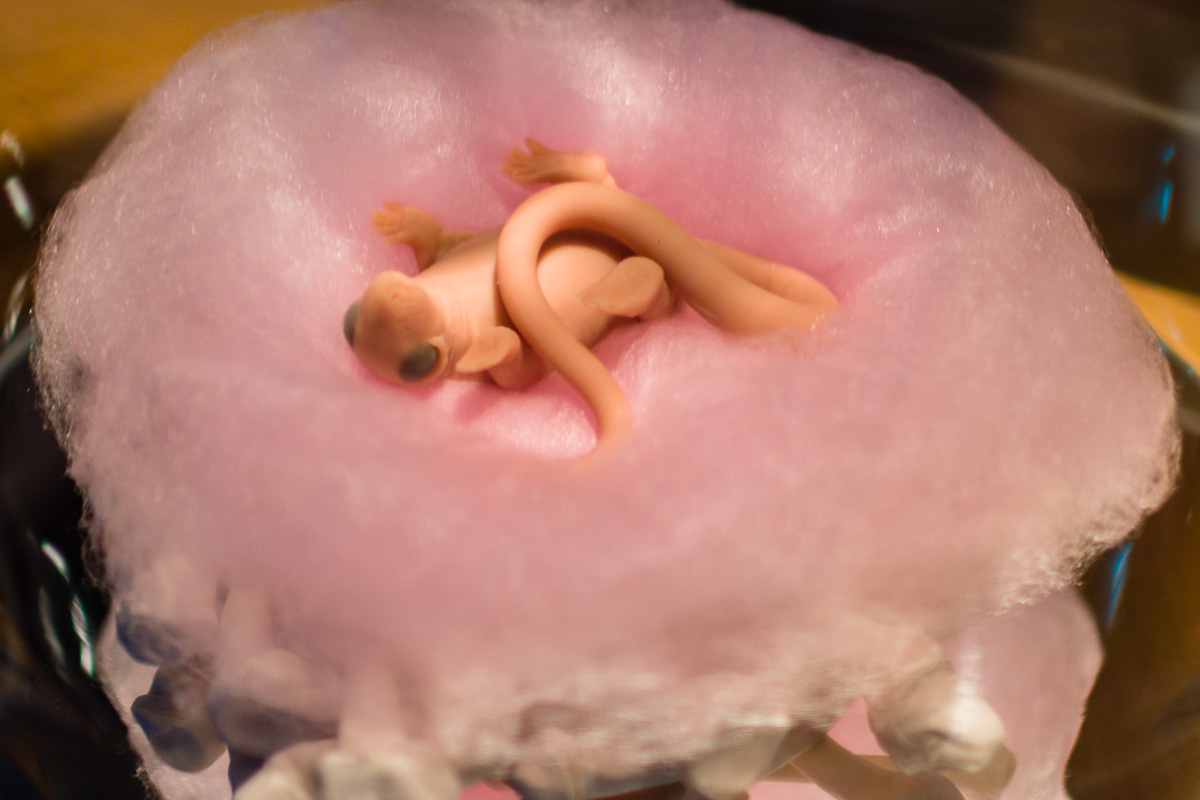"Sugar-coated art with a sinister center"
Art by LJ Lindhurst
HERE Art Center, New York City, April 17, 2014; Opening reception of the art exhibition Bibbidi-Bobbidi-Boo, curated by Dan Halm, a group exhibit expressed through a variety of mediums that at first glance appears to be benign and joyful, but the truth is darker and it sits deeper within each individual’s pieces.
Dan Halm, Curator
Entrance to the Bibbidi-Bobbidi-Boo exhibition
In my opinion, the opening reception was a success. The show experience gets enhanced by the smart layout plus the space itself starting from the exterior, walking west along the colorful and cheerful storefront toward the entrance, it psychologically sends a message to my mind that everything inside is consistent with the jovial façade. However, when the entrance opens, it is darker inside! The show gets its energy from the layout of the work. In fact, the layout provides each piece the right amount of space allowing people to congregate and engage with the art.
Moreover, I briefly spoke with a few of the artists from whom I got insightful information about their work.
Art by Richard Stauffacher, "Home, Sweet from his series Seventeen"
Richard Stauffacher, Artist
Show-goer enjoying free treats
For instance, when I spoke with Richard Stauffacher about one of his pieces, Home, Sweet from his series Seventeen, a bell jar containing a pinky rat resting on a nest of bones topped by cotton candy, although this piece appears to be cute, there is a dark personal meaning behind his choices. He is tackling the tenuous and awkward relationship between pre-adult children and their parents through specific and formative moments of childhood. Growing up, Stauffacher describes his father as hyper-masculine and initially hesitant of his son’s sexual orientation. For this reason, Stauffacher’s art is in response to his father and his own feelings during his adolescence. The pinky rat symbolizes offspring who are very vulnerable and dependent on their parents. The seventeen individual bones in his work mark the date of his father’s birthday, which was on the same date of the opening. He also spun cotton candy during the reception as a treat to viewers wrapped around bones (17 units only.)
Another artist I had the pleasure of conversing with was Matt Bucy. His piece, Of Oz the Wizard consists of re-editing the film “Wizard of Oz” so that the dialog is rearranged alphabetically. Bucy says that the thought for this project happened two years prior from a conversation with a friend. However, after the initial conversation, he forgot about the project until the same friend asked him about it again. In order for Bucy to be fast and efficient, he developed his own computer algorithm to facilitate re-editing the film.
The film was displayed on three screens laid next to each other horizontally and synchronized to play the same thing simultaneously. I am familiar with the “Wizard of Oz”, and as I watched Bucy’s re-edit, I found myself entertained and engaged with the film in an uncanny and abnormal way that is far from the original.
In conclusion I would rate the overall experience highly and recommend it to others.
Event Photographs
Art Photographs
Press Release
April 17 – May 24, 2014
Opening Reception, April 17, 5:00-7:00pm
HERE proudly presents Bibbidi-Bobbidi-Boo, at HERE (145 Sixth Avenue) from April 17th – May 24th, Tuesday – Saturday 2:00-7:00pm. Curated by Dan Halm, the artists selected for this exhibition on the surface present cheery, candy-colored images but look a bit deeper and you’ll notice they are tackling darker, and in some cases sad themes of love, family, and self doubt. Whether it is Matt Bucy’s re-edit of the Wizard of Oz so that the film’s dialog comes out alphabetically, Gregg Louis’ wig sculptures, Richard Stauffacher’s cotton candy nests or Colleen Ford’s golden carrot hung just out of hand’s reach – these works are meant to delight and bring a smile to the viewer’s face and then after spending some time observing them, notice how dark they truly are.
“The show takes its title from the beloved song that first appeared in the Walt Disney version of Cinderella,” says Halm, “But the phrase Bibbidi-Bobbidi-Boo also has a darker origin, as the name of the devil’s daughter in the story of “Bubnoff and the Devil” by Ivan Turgenev. I love how something as sweet as the song can be rooted into something much bleaker, very much like the art selected for this exhibition; things aren’t as cheerful as they might first appear.”
Press contact: Kristin Marting / Kristin@here.org / 212-647-0202 x 320
To download the complete press release please click, HERE!

